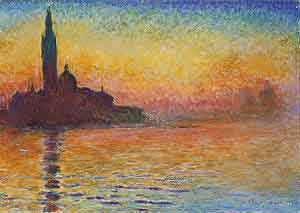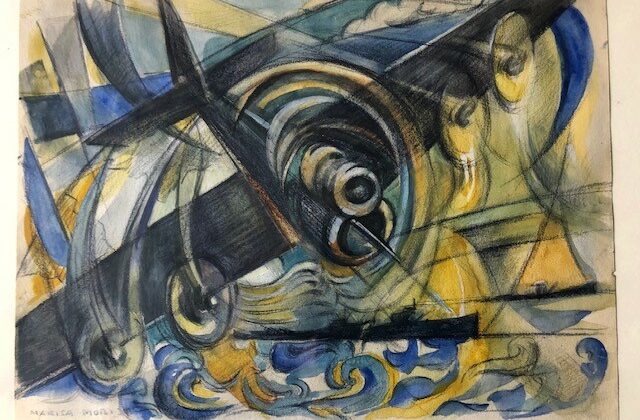Monet au le couer de la vie

By Francesco Carelli
University of Milan, Rome
“Monet au coeur de la vie” is the title of the exhibition, which is promoted by the Municipality of Pavia, produced and organised by Alef – cultural project management, with the patronage of the Ministry for Cultural Heritage and Activities and Tourism, the French Embassy in Italy, and the Institut français of Milan. The exhibition has been curated by Philippe Cros. It presents a selection of works from prestigious museums all over the world: from the US, such as the Columbus Museum of Art (Ohio), to France, with the Musée d’Orsay in Paris; from the Johannesburg Art Gallery in South Africa, to the Mnar in Bucharest, Romania, and the Latvian National Museum of Art in Riga, as well as other high-profile international collections.
The public will have the chance to admire some of Claude Monet’s most important works, and go through the main stages of his artistic career, from his training right up to his fullest maturity.
Moreover, an innovative, emotional exhibition itinerary will offer visitors a completely new way of approaching the Master’s personal life too, allowing the public to discover Monet the “man”, as well as the great artist. This exhibition is a journey into the heart of Monet’s life, through the voices of six key figures in his personal and artistic development.
His relationships, his successes, as well as difficult times, have been reconstructed based upon some precious letters (lent by the Musée des Lettres et Manuscrits in Paris, and on display as part of the exhibition), in which the painter describes certain moments and sentiments he experienced. Along the exhibition route, a series of evocative video-installations will emotionally prepare the public to relive the key events in Monet’s life, and to understand how they are related to the paintings on display. The text and narrative have been conceived in harmony with videos, sounds, and the paintings themselves, so as to create the right conditions and elicit the deepest emotions in visitors, allowing them to comprehend and enjoy Monet’s output to the full.
The exhibition begins with the early years of Monet’s career as an artist, narrated by Adolphe Monet, the painter’s father. He had a rather difficult relationship with his son, both due to his choice of career – especially given his independent ideas, which clashed with the teachings of the Academy – and due to his personal and romantic choices.
In the following room, Eugène Boudin will plunge visitors into the artist’s youth, during which he carried out his first experiments with painting en plein air, and made innovative stylistic choices that clashed with the academic painting style of the time.
Boudin, a French painter who was Monet’s first teacher, left a profound impact on the artist’s way of working, so much so that Monet would later admit: “If I became a painter, it was thanks to Eugène Boudin.” Some of Boudin’s major works are included in the exhibition, showing his fundamental role in Monet’s training and in the development of his style, as demonstrated by the painting Bateaux à Etretat (Boats at Etretat, 1883), in which Monet uses the same painting technique as his tutor.
Through the tender words of Camille Doncieux – Monet’s first wife and the mother of his two children – visitors can relive a particularly productive time in Monet’s career. Camille played a central role in the artist’s work: from 1860 to 1879 he was his muse and his favourite model, and featured in most of his paintings, until her untimely death at the age of just 32. Days out at Argenteuil, walks along the Seine and at the seaside with his family were also very stimulating from an artistic point of view for Monet, who further consolidated his outdoor painting technique and his study of life, and experimented with new subjects such as Bateaux de pêche à Honfleur (Fishing Boats at Honfleur, ca. 1866), La gare d’Argenteuil (Argenteuil Station, 1872) and Printemps (Spring – 1873), all of which are displayed in this section.
During his artistic development, Monet had to face a series of adversities due to financial troubles, the heavy criticism of the classicists, and repeated refusals from the Salons. This particularly frustrating period for Monet will be narrated by one of his greatest advocates: Georges Clemenceau, the French politician (Prime Minister from 1906-1909 and 1917-1920), with whom Monet formed a close friendship, particularly in the later years of his life. It was Clemenceau himself who in 1921 commissioned Monet to paint the famous water lilies for the Orangerie, later defined the “Sistine Chapel of Impressionism”.
In this room, which sets out to symbolically evoke the contrast between two different systems of painting, visitors can compare the academic painting style exhibited at the Salons -represented by works such as Jules Breton’s Paysage maritime (Maritime Landscape), and by Les Pyrénées (The Pyrenees) by Marie Rosarie Bonheur, two artists who were extremely popular with art critics at the time – with the innovative technique used by the “Father of Impressionism”, represented here by some emblematic canvases such as Marine, Pourville (Marina, Pourville, 1881), and Le Cap Martin (1884). These works will be shown alongside Louis Leroy’s famous article from the magazine Charivari of 25 April 1874, lent exceptionally for this exhibition by the Galleria Nazionale d’Arte Moderna in Rome. In it, the term “impressionists” appeared for the first time – used in a strongly critical, derogatory sense.
The narrative continues with Alice Hoschedé, Monet’s second wife. She will tell visitors about the journeys the artist went on in his continuous search for stimuli, inspiration and new subjects to paint, such as his stay in Norway to research and study the effects of snow. While this period, from 1880 to 1895, saw some of his greatest masterpieces come to light, Monet was constantly dissatisfied with his paintings and with the places he visited. These were the years during which the artist almost completely abandoned representations of the human figure, to concentrate on the purely impressionist theme of the landscape, with a particular interest in the halo of light surrounding nature. It was in this period that Monet began to paint his famous “series”, in which light played a fundamental role in the composition of the work. This is demonstrated by Waterloo Bridge (1900) and the evocative Cathédrale de Rouen (Rouen Cathedral, 1894), which are the focal paintings in this section.
The exhibition itinerary closes with the words of Blanche Hoschedé, Alice’s daughter at Monet’s only pupil. He became very close to Blanche in the last period of his life, from 1914 to 1926, which he spent in Giverny: a magical place in which the artist finally managed to fulfil his desire for rural tranquillity.
Blanche will tell the public about the painter’s obsessive love for his beautiful garden at his home in Giverny,
about their trips out to paint together in the countryside, and the first symptoms of cataracts which considerably changed Monet’s sight, and therefore his perception of colour, too. Some of Blanche’s paintings are featured in this section, showing her impressionist style, which has much in common with that of the Master.
In the final years of the artist’s life, his house at Giverny became his sole source of inspiration: a meticulously kept garden in which Monet also decided to have a Japanese bridge built – evidence of his interest in the land of the rising sun. The exhibition features a series of precious prints by famous artists such as Katsushika Hokusai and Utagawa Hiroshige, underlining the painter’s close links with Japanese art.


